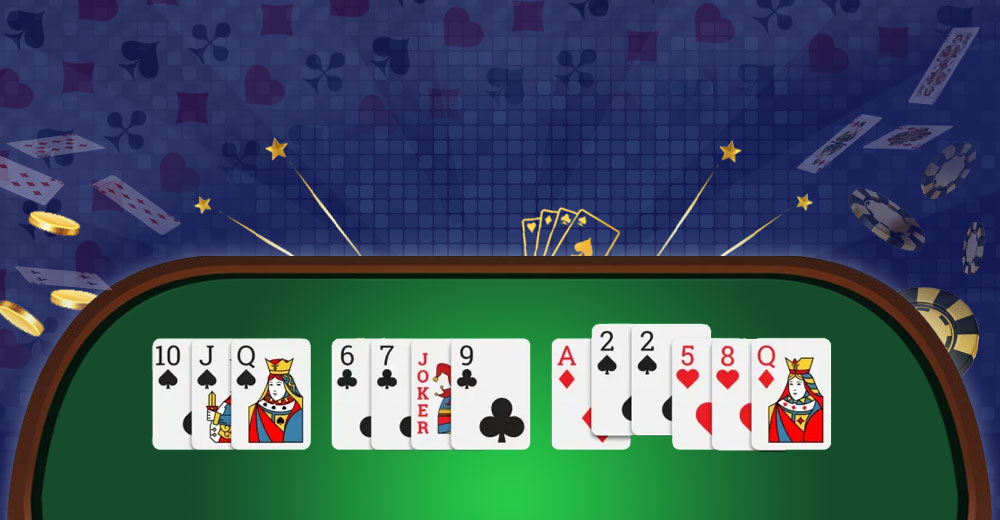Differences in Joker Utilisation Across Variants
In Indian Rummy, the Joker is more than just a wild card - it’s a flexible tool that can help you navigate complex hands and create opportunities to declare faster. However, its role varies significantly across different formats. From the rapid pace of Points Rummy to the calculated rhythm of Pool Rummy and the balanced structure of Deals Rummy, knowing when and how to use Jokers is essential. This guide breaks down these strategic differences to help you handle Jokers effectively across all types of online rummy game formats, especially when following standard Indian rummy rules.
1. Joker Usage in Points Rummy
In Points Rummy, speed and precision are everything. Players aim to declare as quickly as possible with the lowest score. Here, Jokers are mainly used to complete sequences or sets after a pure sequence is established. The sooner a player forms valid combinations, the better their outcome. Thus, using the Joker early to finish high-point cards is a smart strategy. Delaying its use might cost you if another player declares first. Efficiency matters, and the Joker helps achieve that when used in sync with your meld-building decisions.
2. Joker Handling in Pool Rummy
Pool Rummy prioritises survival over several rounds rather than single-hand wins. The Joker here is valuable not just for completing combinations, but also for defensive hand management. Players often save Jokers to reduce points, especially when they sense that an opponent is about to declare. Given the cumulative scoring format, minimising penalties becomes crucial. In this setup, it’s often better to retain a Joker a bit longer rather than use it hastily. Understanding when to merge it with medium-value cards instead of high-value ones is key to smart retention.
3. Strategic Joker Use in Deals Rummy
In Deals Rummy, the probabilities of each deal are equal, and players begin every round with fresh hands and equal opportunity. This neutralises long-term defensive tactics, placing emphasis on balanced play. Jokers in this format serve dual purposes: completing sets to win the deal, and offering a fallback if the hand doesn’t shape up well. Since all players receive the same deal count, conserving Jokers when you're holding poor cards could help mitigate risks. Using them tactically - neither too early nor too late - creates space to control the deal’s tempo.
4. The Value of Printed vs Wild Jokers
A key point in the Indian rummy card game strategy is knowing the distinction between printed Jokers and wild Jokers (the randomly selected value card for a match). Printed Jokers are generally more versatile, while wild Jokers sometimes limit options depending on the rest of your hand. In all variants, printed Jokers can substitute any card except for pure sequences. In contrast, using wild Jokers often involves more careful sequencing. Familiarity with how both types interact in each variant is vital to effective play.
5. Advanced Joker Strategies for Multi-Game Play
When playing across formats - particularly in tournaments or app-based indian rummy online platforms - you’ll need to shift your Joker strategy fluidly. A technique that works in Pool Rummy might backfire in Points Rummy. Some advanced players use Jokers to bait opponents into thinking they’re closer to declaring, only to shift gears mid-hand. Others create dummy sets to mislead watchers in multi-player rooms. These mind games aren’t always necessary, but can give an extra edge to those aiming for high-skill play.
Conclusion: The best time to use the Joker is when it secures you both speed and safety.
Understanding Joker utilisation is fundamental for thriving across all Indian Rummy variants. Each format offers unique pacing and scoring rules, and your use of the Joker must reflect that. In Points Rummy, it’s a tool for fast wins. In Pool Rummy, it becomes a safeguard for managing loss. In Deals Rummy, it serves a balanced, opportunistic role. Recognising how to shift your Joker use based on the structure of the game not only improves your gameplay but also builds consistency across formats. Stick to the fundamentals, adapt when needed, and treat the Joker as your most adaptive resource.




